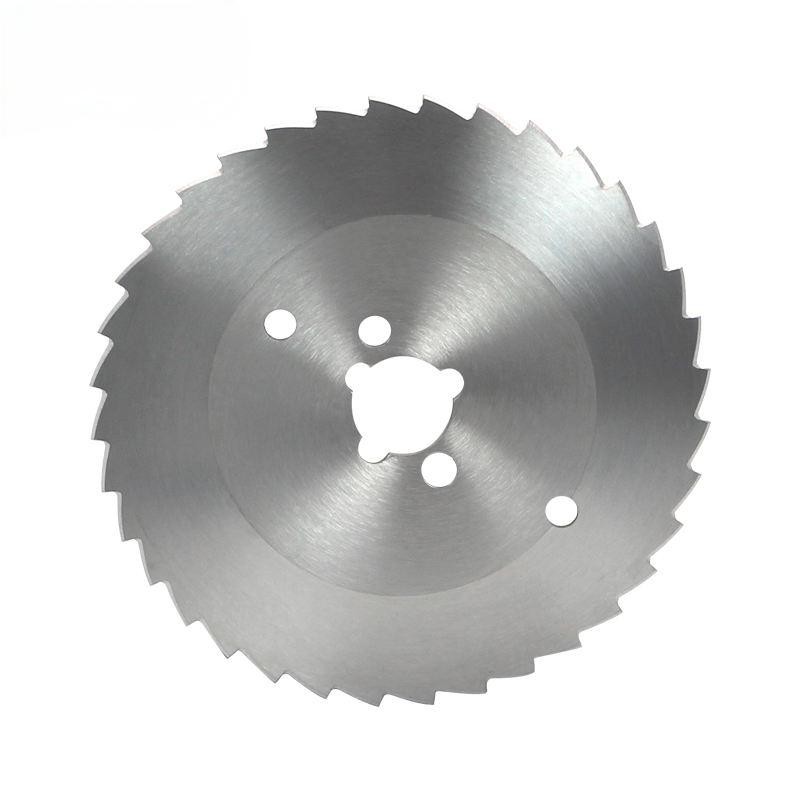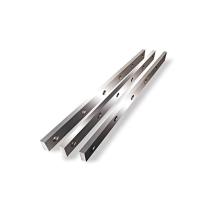| Sign In | Join Free | My himfr.com |
|
| Sign In | Join Free | My himfr.com |
|
| Ask Lasest Price | |
| Brand Name : | Seton |
| Model Number : | Ceramic |
| Certification : | CE ISO |
| Price : | Can be discussed |
| Payment Terms : | L/C, D/A, D/P, T/T, Western Union, MoneyGram |
| Supply Ability : | 500 Piece/Pieces per Day |
| Delivery Time : | 30 days |
Ceramic Industrial Round Blades For Cutting Fabric 250mm
Description:
Industrial slit saw blades offer several advantages and limitations in metal fabrication and processing applications:
Advantages:
Precision Cutting:
Slit saw blades can make accurate and clean cuts on a variety of
metal materials, ensuring dimensional precision for the final
products.
This is particularly important in applications where tight
tolerances are required, such as in the production of metal
components and assemblies.
Versatility:
Slit saw blades can handle a wide range of metal types, including
steel, aluminum, stainless steel, and other alloys.
This versatility allows them to be used in diverse metal
fabrication processes, from pipe cutting to sheet metal slitting.
Productivity:
The consistent and efficient cutting performance of slit saw blades
can help increase production throughput and reduce manufacturing
time.
This contributes to improved overall efficiency in metal processing
operations.
Cost-Effectiveness:
Slit saw blades are generally more cost-effective compared to other
cutting tools, such as laser or waterjet cutting systems, for
certain metal fabrication tasks.
This makes them a viable option for small to medium-sized metal
manufacturing enterprises.
Limitations:
Material Thickness Limitations:
Slit saw blades have limitations in terms of the maximum thickness
of metal they can cut effectively.
Thicker metal materials may require alternative cutting methods or
specialized high-power slit saw configurations.
Burr Formation:
Depending on the metal type and cutting parameters, slit saw blades
can sometimes create burrs or rough edges on the cut surfaces.
This may require additional deburring or finishing operations to
achieve the desired surface quality.
Heat Generation:
The cutting process using slit saw blades can generate significant
heat, which may affect the workpiece and the tool itself.
Proper cooling and lubrication strategies are often necessary to
manage heat-related issues and maintain blade performance.
Noise and Vibration:
The high-speed cutting action of slit saw blades can produce
considerable noise and vibration, which may necessitate the use of
noise-dampening measures and robust machine setups.
Industrial Blade Specifications:
| Product name | Paper Industrial Knife Blade |
| Material | Tungsten Steel |
| Hardness | HRC56-72 |
| Precision | ±50 Micron |
| Length | 60mm |
| Width | 15mm |
| Thickness | 2.2mm |
| Applicable Industries | Manufacturing Plant |
Slit saw blades often offer a more cost-effective solution compared to other metal cutting tools in several ways:
Lower Capital Investment:
The initial cost of acquiring slit saw blades is generally lower
than that of specialized cutting equipment, such as laser cutters
or waterjet systems.
This makes slit saw blades more accessible for small to
medium-sized metal fabrication enterprises with limited capital
budgets.
Reduced Operating Costs:
The operational costs associated with slit saw blades, including
energy consumption, maintenance, and consumables, are typically
lower than those of advanced cutting technologies.
This contributes to a more favorable overall cost of ownership over
the lifetime of the cutting tools.
Versatility and Adaptability:
Slit saw blades can be used to cut a wide range of metal materials
and thicknesses, reducing the need for multiple specialized cutting
tools.
This versatility allows metal fabricators to handle a variety of
cutting tasks using a single slit saw blade setup, further
enhancing the cost-effectiveness.
Ease of Use and Maintenance:
Slit saw blades are generally simpler to operate and maintain
compared to complex cutting machines, requiring less specialized
labor and training.
The straightforward maintenance and longer tool life of slit saw
blades can lead to reduced downtime and higher overall
productivity.
Scalability:
Slit saw blades can be easily integrated into existing metal
fabrication workflows and can be scaled up or down based on
production requirements.
This flexibility allows metal fabricators to match their cutting
capacity to the evolving needs of their business, optimizing their
overall cost structure.
Picture:


Size:

Applications:

Packing:


|




